“As to methods there may be a million and then some, but principles are few. The man who grasps principles can successfully select his own methods. The man who tries methods, ignoring principles, is sure to have trouble.”—Harrington Emerson
A few years ago, my deadlift was at a crossroads. While combing through my training logs, I realized that accessory work and advanced programming weren’t helping me improve. Instead, whenever I added a new deadlift-related exercise or an extra day of lifting, my deadlift remained stagnant at best, and declined at worst.
This went against everything I’d learned from the Internet, which we all know is never wrong. Indeed, we’ve all met someone who improved his or her deadlift with hamstring curls, good mornings, or a fancy periodization model. There are also documented cases of someone using kettlebell swings to improve the deadlift, sometimes without ever touching a barbell—the WTH effect at its finest.
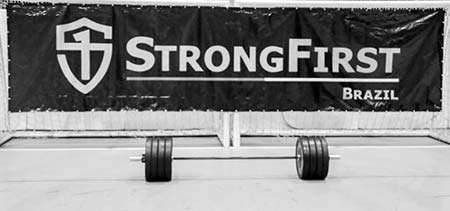
But what about me? Why wasn’t I seeing the progress I expected? Was the accessory work and programming overrated? Was all my extra work sapping my recovery? Or was I guilty of majoring in the minor and missing something big?
Confused and determined to find an answer, I decided on my course of action: I would use StrongFirst principles to guide a simplified approach to increase my deadlift.
The Plan to Increase Your Deadlift
This simplified approach meant deadlifting once a week, cycling between sumo and conventional every three to six months, and staying between 9 and 25 total reps each session. Most importantly, it meant simple programming. I wouldn’t be tempted by the next “Best Deadlift Program” I’d see on the web.
It also meant no traditional accessory exercises. No deficit deadlifts, speed deadlifts, rack pulls, good mornings, bent-over rows, hip thrusts, or progressive resistance like bands or chains. If my deadlift improved, it’d be through practicing the skill, not a drill.
That was in 2013 and my deadlift at the time was 350lbs, or 1.8 times my bodyweight.
Two months ago, I deadlifted 571lbs—that’s 3 times my bodyweight.
Of course, results not typical. But what were the StrongFirst principles I used and how did I incorporate them into my training? Here are three actionable tips anyone can use to improve deadlift performance:
Tip #1: Record. Every. Lift.
I can’t tell you where I first heard the saying, “The elite are just better at the basics.” But I can tell you it was definitely from a StrongFirst source, as it exemplifies the principle of quality over quantity and how the devil is always in the details.
I vividly remember the first time I saw my deadlifts on video. Embarrassingly, the real reason I was recording them was to see how great I looked. While the bar was moving, I hesitate to call that movement a “deadlift.” I wasn’t wedging at all, my hips were too low, the bar leaked away from my shins, and by halfway up I resembled Quasimodo. It didn’t measure up to StrongFirst standards and I’ve since hidden that video deep in my computer’s hard drive.
That experience prompted me to take video of every rep for the next few months, even the warm-ups. It was the best way to constantly reinforce my good habits while quickly breaking the bad ones. I thrived on the immediate feedback and it worked so well that I’ve continued to use it to refine the basics.
When I watch a video frame-by-frame, it’s much easier to tell if the bar lags behind my torso as I break the floor or if my hips rise a split second too early. Through the years, this approach has helped me see how my body position incorrectly translated forward and how I needed to alter my hands for a stronger grip.
Yet, I wonder if everyone is using technology to maximize their own lifts, as phones and tablets only tend to come out as the weight starts to rise. Using your phone to record every rep will help you drill home the basics, improve on every set, and regulate your training by watching your bar speed. I believe it will maximize your results and your safety more than any accessory exercise or program. And it’s an advantage we didn’t have only a few years ago.
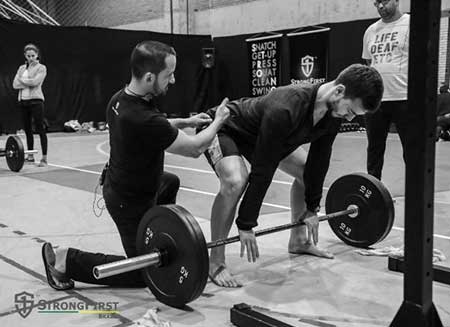
Tip #2: Stop the Mental Warfare (with Yourself)
As a former back-pain sufferer, I’d argue that the deadlift is the most psychological lift. It also didn’t help that my starting technique was terrible (see above), and I feared the day my discs would finally crumble and leave me in traction. But, as expected, my back started to feel better as I cleaned up my technique.
Still, I had my share of sessions where all I could think about was not getting hurt. As anyone who’s lifted serious weight will tell you, when all you’re thinking about is not getting hurt, that’s exactly when you will.
I knew this fear was holding me back. Desperate for help, I turned to the book Psych by Judd Biasiotto—and I never looked back.
Using Biasiotto’s tactics of positive self-talk and vivid visualization, I slowly started to turn the corner. I distracted myself from fears of injury by creating a mental checklist and routine to perform before each lift. I also used Biasiotto’s muscle relaxing and meditation techniques and found my fear dissipating after a few weeks. Even though I was only performing between 9 and 25 physical reps per week, I completed many more in my mind. When I woke up in the morning, took a shower, or had spare time, I visualized myself completing the perfect rep. Pain-free, of course.
Aside from reaching my deadlift goals, the biggest victory I’ve had is not worrying about back pain in everyday activities. The more progress I saw on my deadlift—aided by better movement, strength, and technique—the less back pain I had in daily life. It only makes sense that being able to deadlift 500 pounds for multiple reps helps eliminate the fear of picking up a load of laundry.
Strength—be it mental or physical—truly has a greater purpose.
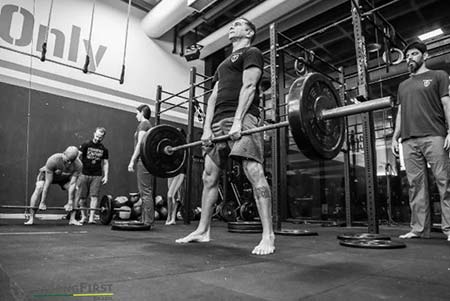
Tip #3: Don’t Miss a Rep
I’ve always struggled with the concept of not training to failure. If I don’t train at maximal intensity, how will I ever improve? What’s the point of having a max deadlift if I can’t do it any given day?
Note: Trust me, I understand the irony of these questions given my two previous points. I consider it a minor miracle that training at a high intensity with terrible technique never yielded any actual injuries in the early days, only mental blockages.
Regrettably, training at near max-effort every session was my mindset for years. I was lifting at too high a percentage, grinding out lifts, and thinking I had won the day. My progress was great—until it wasn’t.
When I attended my SFG Certification, my thinking finally changed. When speaking about programming, Chief SFG Instructor Brett Jones offered up this brilliant thought, “Only the mediocre are always at their best.”
That idea saved me from myself.
In previous years, I had never missed a deadlift day and tried to peak every month. If I missed a few lifts during the cycle, oh well. I’d recast my numbers to a (slightly) lower percentage and start again, thinking it was the only way to progress.
But after hearing Brett’s advice, I stopped putting pressure on myself and started believing in my program and my system. I followed the same program as before—a basic 5/3/1* template—but changed my numbers to allow for a longer-term approach, only peaking one or two times per year. I started to enjoy my lighter days instead of thinking they were a waste of time because I realized they would still improve my technique (see Tip #1) without sapping my recovery.
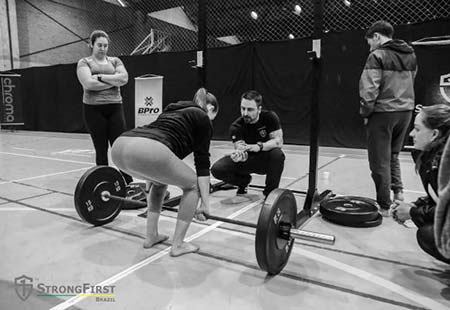
Most importantly, this approach ensured I never came close to missing a rep. There’s something magical about failure not being a possibility because it allows you to build each week, gain confidence, and “sneak up” on new personal records. With this success and the mental preparation of Tip #2, I started to feel invincible on the platform.
A great example of how this change in philosophy and commitment to lighter work came together was a sumo cycle where I hovered around 77% (400 pounds) on my working sets. On the last day of the cycle, I decided to test where I was before I switched back to training the conventional deadlift. I pulled 500 pounds for a set of 5—a personal record at the time and the easiest the lift had ever felt.
Most of us don’t need to put in as much effort or training time as we think. Allowing yourself to train at sub-maximal weights will allow you to see plenty of gain, without the pain. Because the adaptations we seek aren’t just physical, we’re developing the skill and the mind, too.
The Basics: How to Increase Your Deadlift
Will a simplified approach always lead to the best results? Of course not—every athlete, goal, and situation is different. But the basics are not. Using video to perfect your technique, making sure your mental strength matches your physical strength, and never missing a rep might just be your key to progress.
And if you’re like me, it might just save you from yourself.
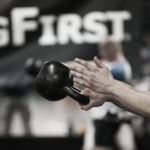
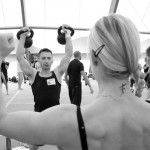
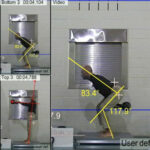
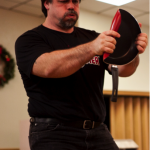

Hi Alex,
what kind of reps where you getting at 400lbs when you managed to pull 500 for 5 reps?
Thanks,
Dan
Hi Dan,
That’s a great question. I tried to focus only on the prescribed reps, which were usually between 3-5 reps. On the rare occasion I would venture outside that range, it was just a test to see where I was without doing a true 1 RM test.
I just looked over my training logs and two months before I pulled 500 for 5, I managed 445 for 10 reps. But I haven’t tried that since.
Thanks for the question!
Great article, Alex! We really need to learn how to save us from ourselves, StrongFirst educates us on that matter. Thanks!
Thanks for reading, Sara! I can’t imagine where I’d be if I didn’t have these principles to guide me.
What was the deadlift program you used?
I was going to ask the same question about what was the actual deadlift program?
Ben – thanks for the question! I followed a 5/3/1 template for that entire time. But my best results came when I set my training max on the lower side so I wasn’t continually sapped or sacrificing technique. Hope that helps!
Thanks for the question, Caroline! I used a simple 5/3/1 template. I’ve found the I respond better to that method of programming than strict linear progression. But I know plenty of people that a linear approach helped them see progress for a few years.
As I hinted at during the article, I don’t think the exact program is as important as following the principles and honing the basics. A mediocre program followed with great effort will still yield some pretty good results!
Alex,
Are you repping out the last set or are you just doing to prescribed reps of the 5/3/1 program?
Hi George,
I’ve experimented with both but prefer sticking to the prescribed reps. Repping out can help with confidence, but for all the extra effort, I never saw a carryover to my max attempts.
Sticking to the prescribed reps is always a bit of mind game (especially when you feel good!), but it tended to leave me fresher for other, non-deadlift workouts that week.
Thanks for the comment and hope it helps!